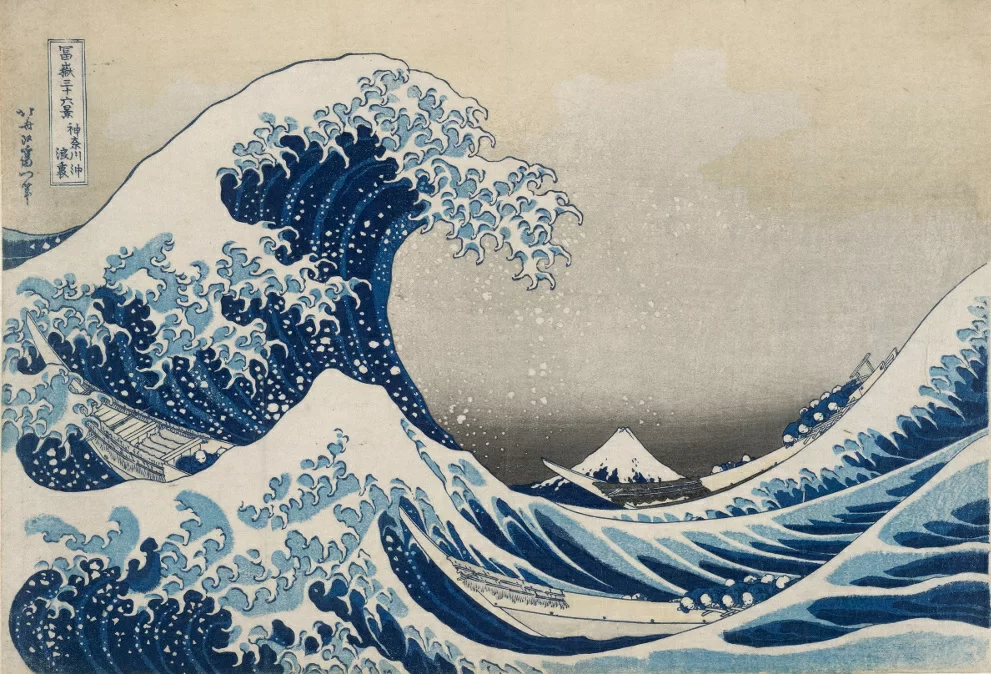
28 September 2019
26 January 2020

28 September 2019
26 January 2020


In 1853, Japan reopened its doors to the rest of the world. Mysterious and different, it was love at first sight, influencing art throughout Europe.
Palazzo Roverella is staging a fascinating and elegant review of the works of great European artists such as Van Gogh, Gauguin, De Nittis, Degas and Bonnard, taking visitors on a voyage of discovery of the new art form inspired by the masterpieces, influences and innovations bestowed by Japan on western culture.
Will you too fall in love with Japan?
Utagawa Hiroshige, Thirty-six major views of Fuji, Fifty-three Tokaido stations
At the end of the 19th century, the discovery of Japanese decorative arts gave a notable shock to the whole of European art. A powerful wind of renewal, if not exactly a hurricane, which from the East invested models, customs stratified over the centuries, leading the art of the Old Continent towards new and more essential compositional norms made of synthesis and luminous colours.
The turning point came when, at the beginning of the 1860s, ceramics, prints and garden furniture from the Empire of the Rising Sun began to spread in Europe, and mainly in France, which, a few years ago, in 1853, had open to the rest of the world.

Katsushita Hokusai – The Great Wave off Kanagawa , 1831
For European artists, it was like opening a previously sealed and inaccessible Pandora’s box – except that, instead of the evils and miseries of the world, it revealed a priceless artistic and cultural heritage to be admired, studied and imitated, and above all, from which to draw inspiration.

Paul Gauguin, Fête Gloanec, 1888
that influenced the most diverse fields of western art and culture, and soon took the name of Japonisme.

Henri de Toulose-Lautrec, Queen of Joy (Reine de Joie) , 1892
starting with the London World’s Fair of 1862, where this new love affair first began and where a wealth of Japanese products were first admired.
A triumph of porcelain, clothing, lacquers, ukiyo-e prints and fans that, a few years later, also conquered Paris (then considered the world capital of art), before spreading across Europe.

Alois Delug, Jum Jum, 1893
to this day, almost two centuries on, that inestimable treasure trove continues to offer western culture precious gems from which to draw inspiration.

Cities are renewed and billboards made of text and images begin to appear on their walls. The manifesto is born.
In the posters, a refinement within everyone’s reach flourishes, an alien universe invades the streets. Japan becomes the mirror of a reality so distant as to become a model and guide.
The precious Japanese prints and ceramics also circulated among the first poster artists who assimilated the tacit teachings, giving life to a hybrid language and new disruptive formulas.

This event represents a fixed point in the history of this country because it intersects a process already underway: the modernization of Japan.
The exchange with Europe, initially animated by prejudices, gradually became more all-encompassing: the new Japan, shaped by the Meiji restoration, had deposed the samurai class, repudiating native customs and traditions by adhering to a sudden westernization, synonymous with modernization.
Japan thus shows itself to the Europe of the first Universal Expositions as a country with a double face, stretched between the threads of tradition and anxieties for the future, modern Japan and the shadow of its fascinating past.